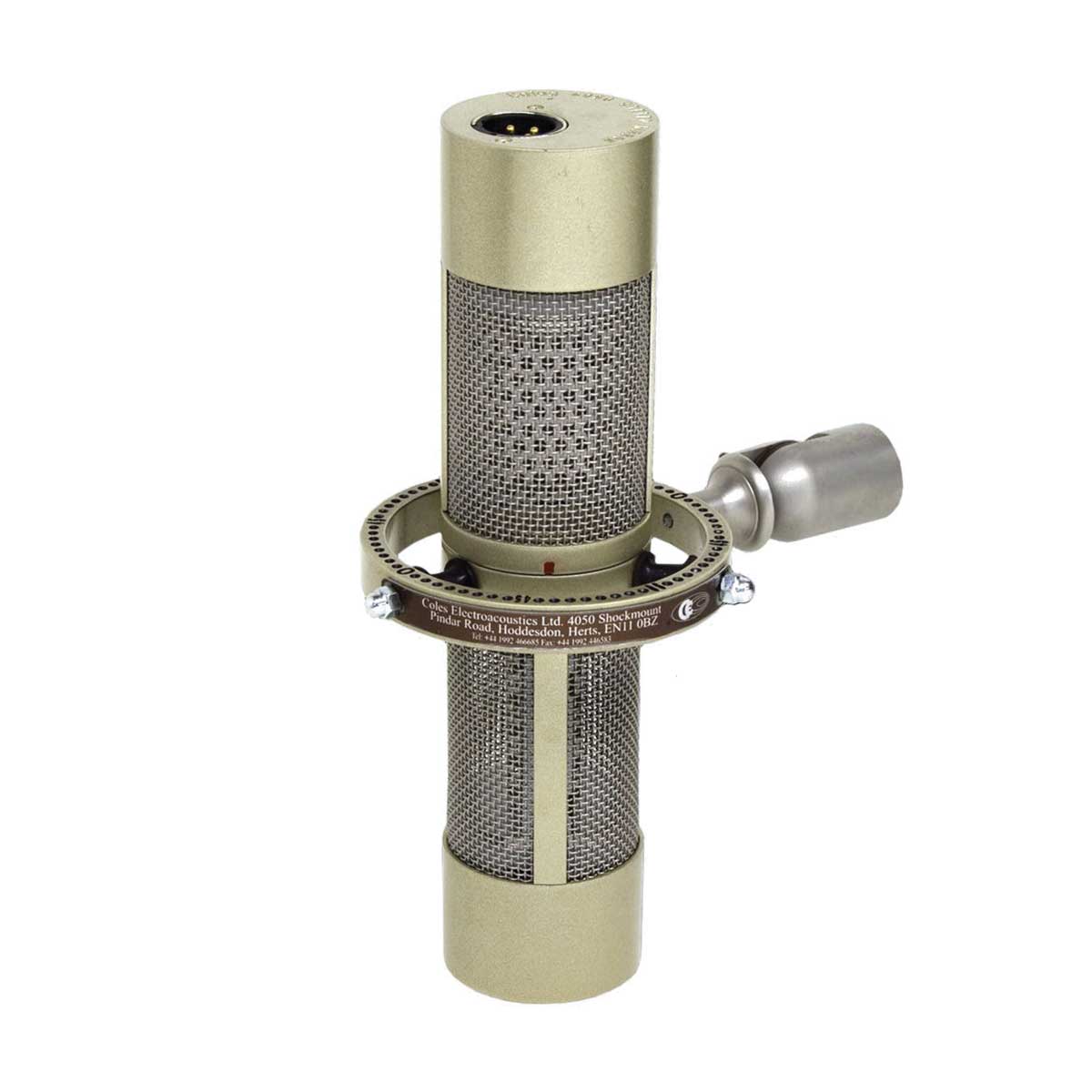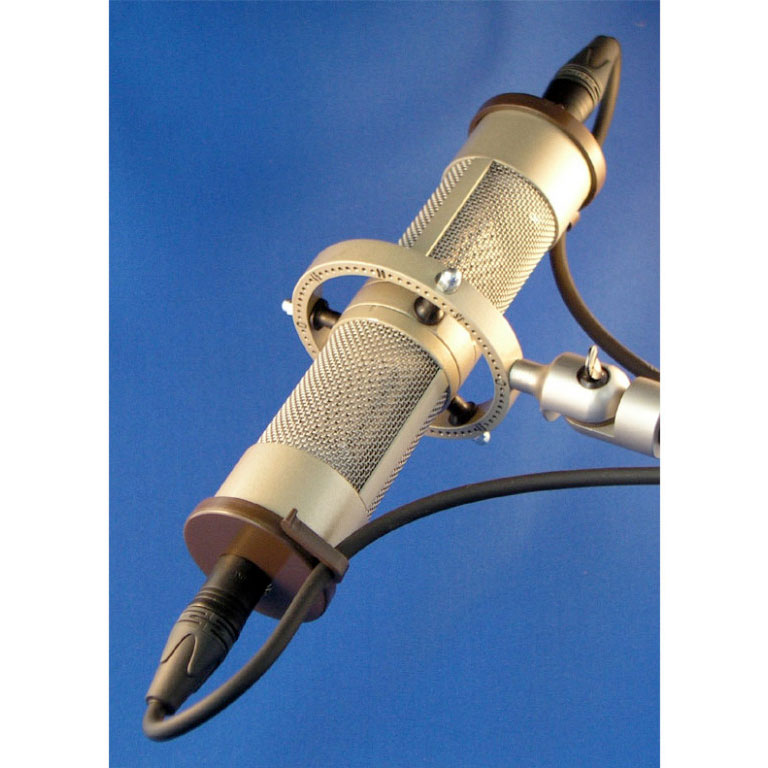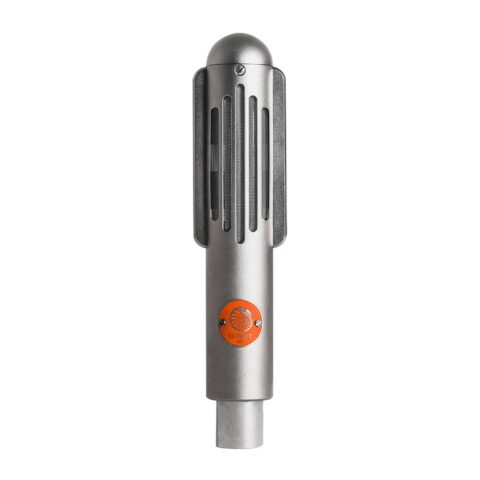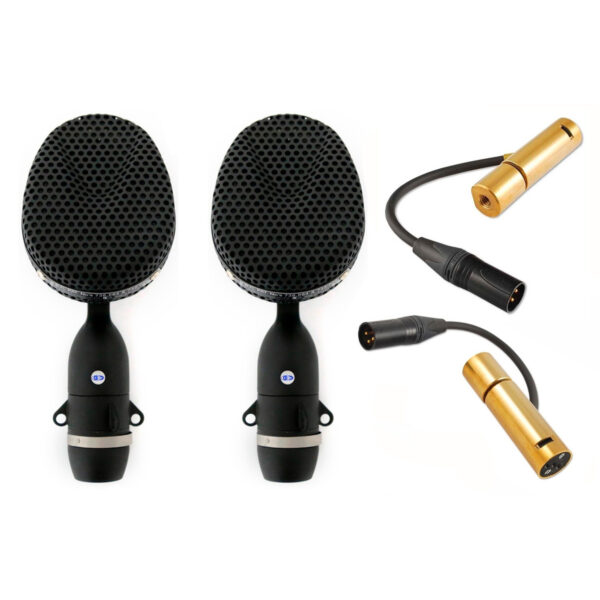Coles 4050 Matched Stereo Pair Ribbon Mic
The 4050 is the latest addition to the Coles line of ribbon microphones. With a bold look, greater output, and a wider frequency response, the Coles 4050’s are sure to complement any studio microphone cabinet. The 4050’s have been designed to be used on their own or as a stereo pair.
The 4050 is the newest ribbon microphone that Coles have developed using the very latest magnet technology. The frequency response of the 4050 is exceptionally flat from 30 to 20,000 c/s and throughout this range the shape of the bi-directional (figure of eight) polar response is maintained substantially constant both in the horizontal and vertical planes. The 4050 is a versatile microphone and is ideally suited for many critical recording applications. Its smooth frequency response characteristics and ability to capture detail make it a fine choice for many instruments.
There is also no discernible stray magnetic field and the 4050‚Äôs come with their own unique shock mount. The microphones can be easily rotated through 3600 making them very easy to mount in a “Blumlein” (crossed figure-of-eights) stereo configuration or any other configuration of choice. The 4050 microphones come in a foam lined rigid plastic carrying case with an adjustable universal stand mount and a soft cloth protective bag, for safe keeping.
The 4050 microphones are attached to the shock mount via magnets enabling them to be swivelled through 3600. The unique shock mount has graduations allowing the microphones to be precisely positioned.
Tips on care and proper use
The ribbon microphone has a history rich in sound achievements. Look at virtually any old movie newsreel, photo journal, recording promo shot, show business and political picture, and you are likely to see the gigantic cages of chrome-plated windscreen-covered, electronic contrivances we know as ribbon, or velocity, or gradient, or ribbon velocity bigradient microphones, They all had one thing in common, a “ribbon” of foil, an “eardrum” or “tympanic” membrane, Usually, they were 1/8 inch to 1/4 inch, in width, 1 to 3 inches in length, very thin, (microns thick) formed in a corrugated or crease-folded pattern. The foils were suspended between two poles of a powerful magnetic assembly, to enable current to be formed by the moving foil passing through the dense magnetic field. Essentially, this creates a voice/sound-operated electric “motor”.
The fact that it is air coupled to an energy source makes it a primitive wind-to-electricity conversion device. Acoustically, this air pressure deflection of the ribbon is referred to as “sound pressure level”, a term used in sound specification sheets.
These microphones are considered “indoor” or studio mics, generally due to the delicate nature of the fine ribbon of foil. Strong air blasts from wind, unwitting users blowing into the mic to test its level, bass or low frequency p.a. speakers will almost certainly drive this gossamer foil from its comfortable cradle, rendering it useless.The overdriven corrugations stretch the foil, allowing it to flap out of its gap, shorting it out on anything it touches, or worse, tearing it loose from its pole clamps, killing the sound totally. The following suggestions should help users understand correct and rewarding use of this wonderful creation, so kind to the human voice, the magical Ribbon microphone!
STC made them originally and then in 1972 Coles had the chance to manufacturing them for STC – the gigantic Standard Telephones and Cables Limited. Two years later when STC decided to discontinue marketing this equipment, Coles purchased all the manufacturing rights and patents and took over their market.
Coles have also extended the market overseas as we now have agents on every continent, and we have continued to improve existing products and develop new ones.
Coles use the very latest CNC technology to manufacture their microphones to a very high degree of precision and Coles are continually investing in the very latest technology. British engineering at its best produces products that matches or surpass those of any other country in the world.
The front and back of the 4050 microphone does not differ in functionality as the microphone is a true figure of 8. When using as a pair in a stereo configuration, the 4050 microphones are polarity in phase with each other. This is shown by a phase mark on the front of each 4050 microphone.
When the 4050 microphone is packed in a lidded container, the lid must not be closed violently.
Do not use phantom power with ribbon microphones.
Ribbon microphones must not be blown into, or placed in close proximity with high sound pressure levels, as this can stretch the ribbon. The Coles 4050 should not be placed in front of a fan or open window as wind will stretch the ribbon.
When not in use, always ensure that the 4050 microphone is placed inside its protective pouch. Under no circumstances must the front of the 4050 microphone be pressed into a yielding surface.Do not attempt to check continuity of a ribbon microphone, as damage to the ribbon may be incurred.If proper care is not exercised, the performance of the microphone may be seriously impaired.Microphones made by Coles Electroacoustics Ltd, are designed for long service under normal conditions and careful treatment will ensure maximum life and stability of response.If the ribbon is ever stretched or the microphone ceases to function, an exchange replacement plug in ribbon assembly can be purchased for ease of repair.
Specifications
- Impedance: 300 ohms
- Sensitivity: -65 dB W.R.T. 1V/PA
- Distortion: Less than 1% at 125 dB SPL
- Connection: By means of an XLR 3 pin plugs – Pin 1 screen – Pin 2 positive –Pin 3 negative.
- Dimensions: Each mic. 102.5mm long x 50mm diameter
- Weight: 362 g (per mic.)
Also available as a single unit, please call or email for details




